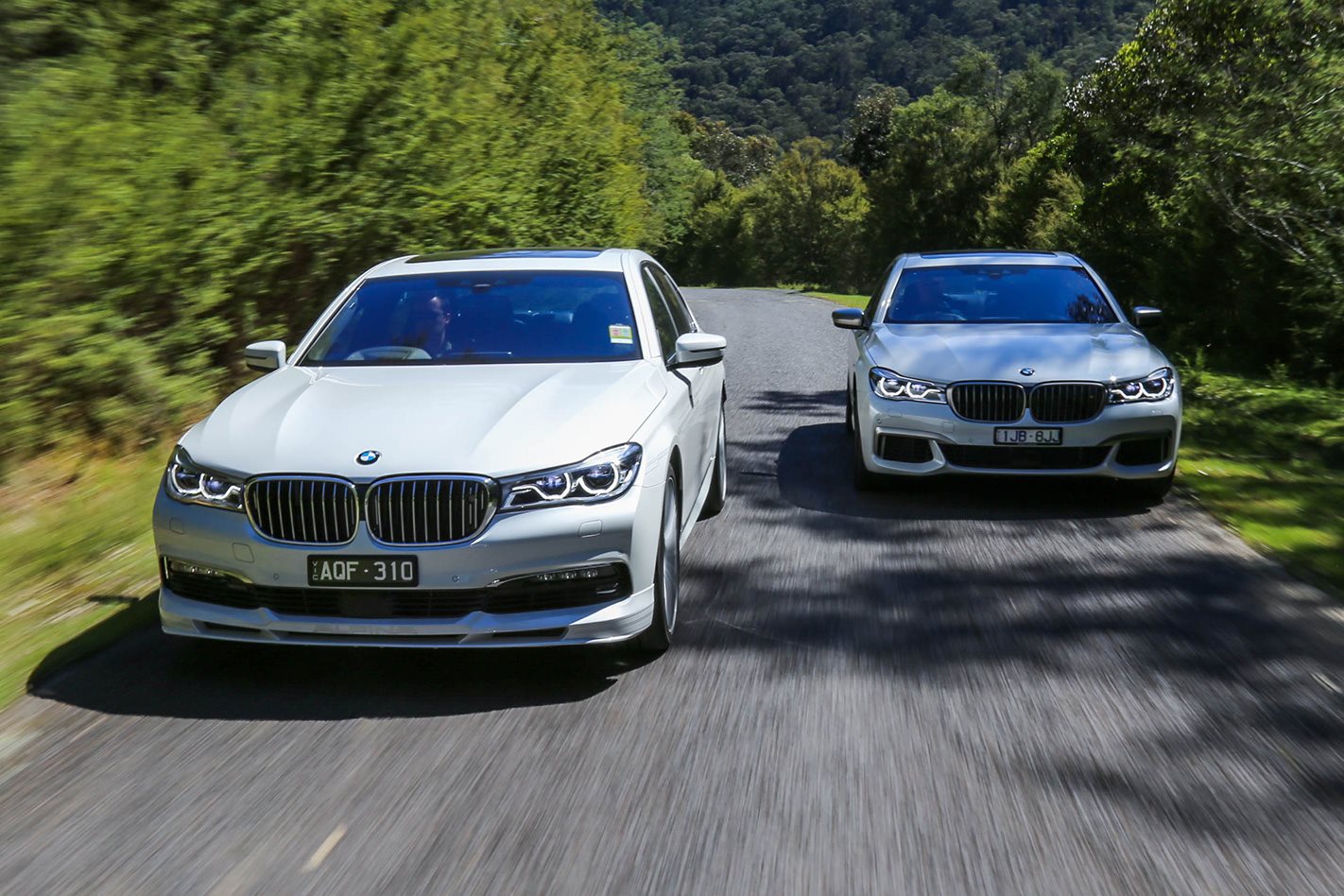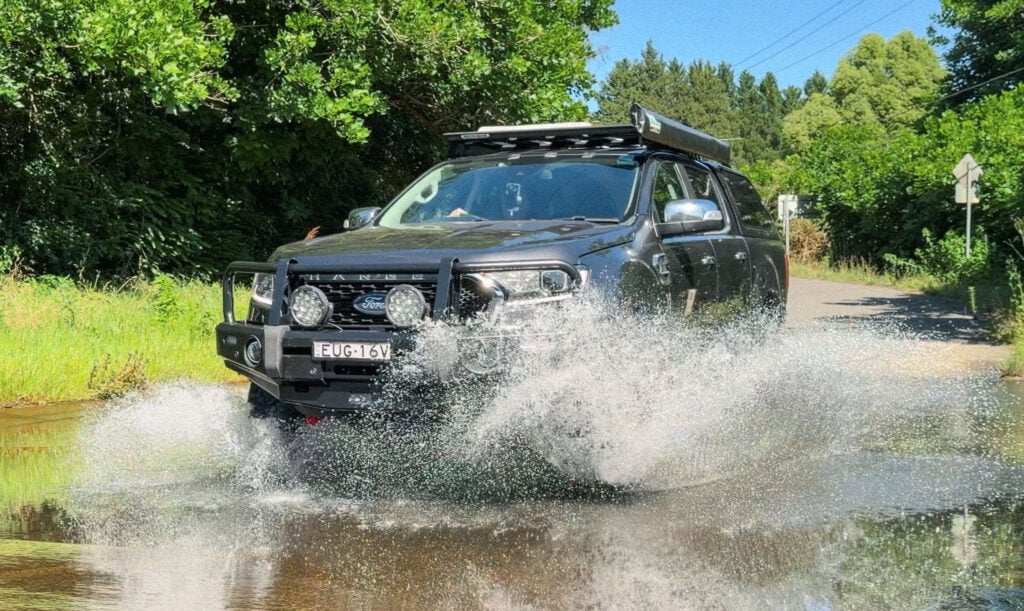FOR many BMW 7 Series customers, one of the six most affordable versions of the range-topping limousine will be more than sufficient.
Priced from $222,100, the entry-level 730d offers bountiful diesel torque coupled with surprising fuel efficiency. At the top of the pack, the $318,710, extended-wheelbase 750Li offers twin-turbo V8 power and extra legroom in the back for people who prefer to be driven.
Straying into the hugely powerful, ultra-luxury and poisonously expensive large limo segment is, unsurprisingly, not a volume player for the Munich manufacturer. Nonetheless, for a very particular type of customer – the type who wants typical lavish 7 Series comfort, but also demands that the carbonfibre cell-clad saloon should be able to destroy sports cars in the traffic light drag race – there is not just a single option, but two. With a budget of about $400,000 you can now walk into a BMW dealership and face a conundrum: go home in a $424K BMW M760Li, or a $369K BMW 7 Series-based Alpina B7 Biturbo.
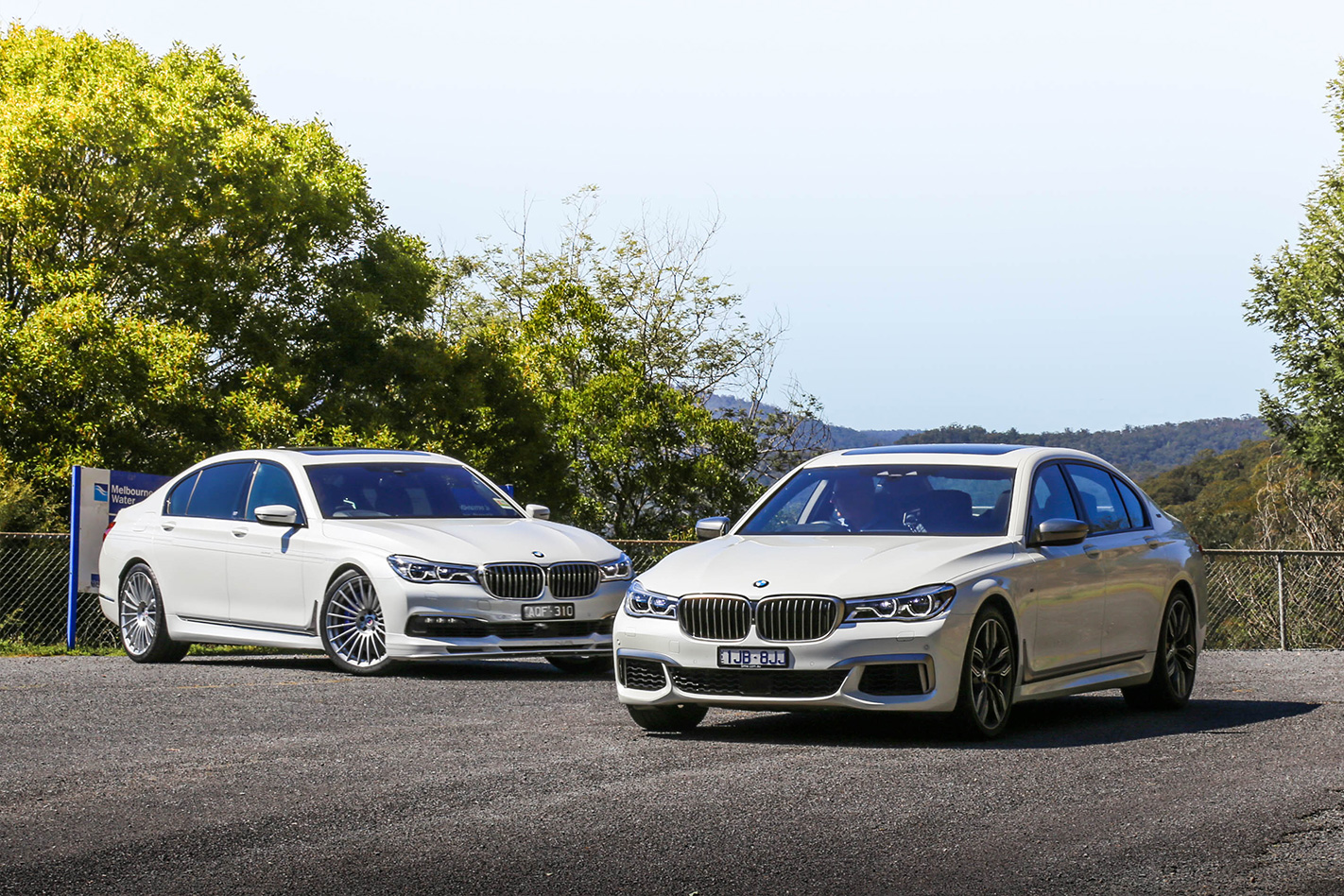
Saying they are similar is probably not quite accurate – saying they’re almost identical in aspects is more correct. Step back and take in the pair of white Beamers (pearlescent in the case of the Alpina, satin metallic-flecked in the BMW’s) and you will need a moment or two to spot the visual differences. Opt for the M760Li and you’ll get a whopping 488kW and 800Nm under the bonnet; go for the B7 and it will match the M760Li’s torque output, but forfeits a single kilowatt. But it’s the performance approach that positions these two bahn-stormers a country mile apart.
Let’s start with those powerplants. The pumped-up pair might produce almost identical outputs, but while the Alpina-badged 7 Series uses a modified version of the 750i’s 4.4-litre twin-turbo V8, the M760 packs a massive 6.6-litre twin-turbo V12, shared with Rolls-Royce.
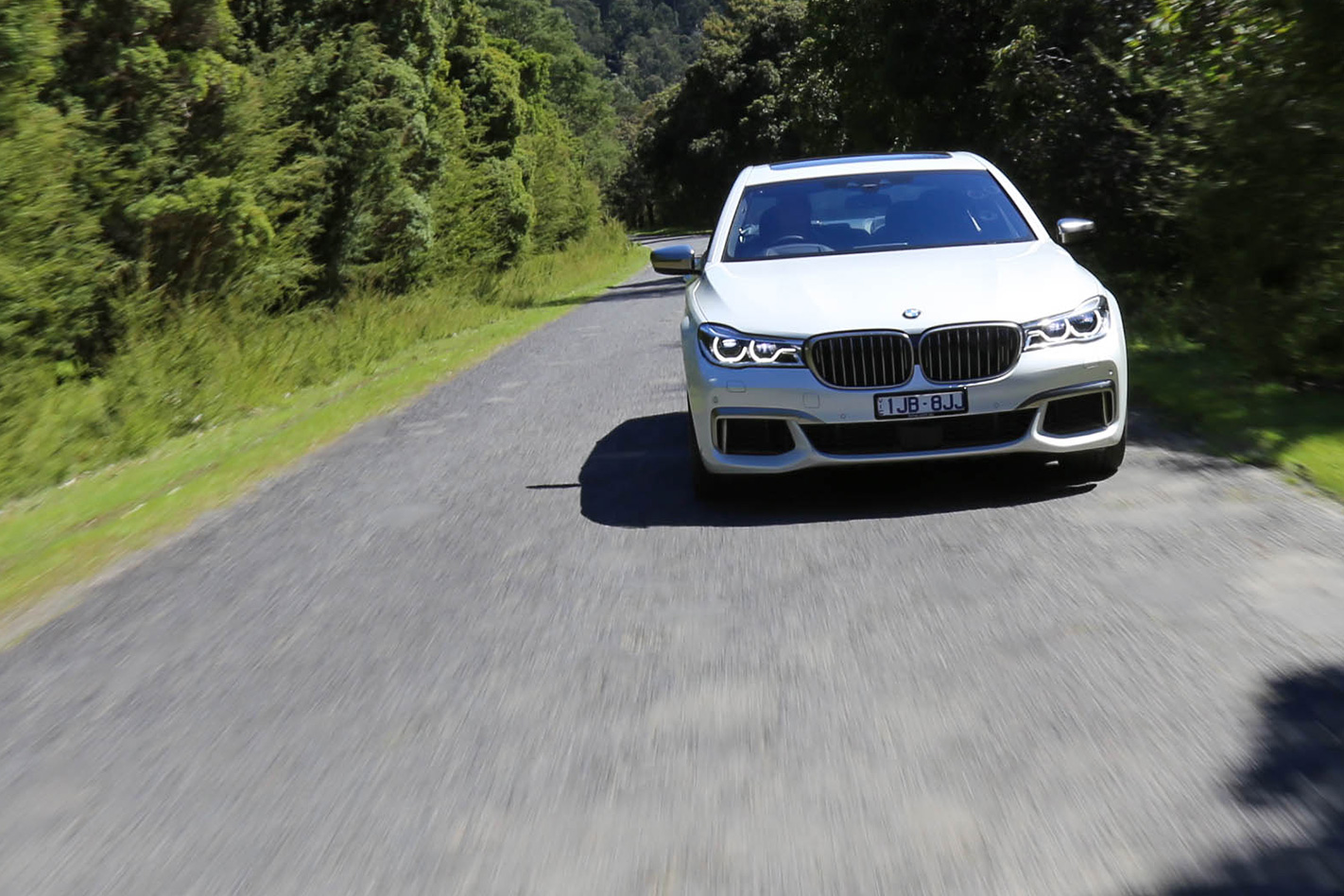
At the helm of the Alpina, the V8 also punches with heavyweight clout, but makes you work for the performance. Peak torque comes in at 3000rpm, delivering similarly tractable grunt without breaking sweat, but if pushed hard, the V8 will eagerly spin up to its maximum power at 5750rpm. If the M760Li engine is the sleeping dragon, the Alpina donk is the waking one, a more highly strung, race tuned unit that rewards when thrashed.
Unlike the B7’s smaller B3 and B4 cousins, the Alpina exhaust note is not as antisocial as we’d expect for something wearing Alpina’s crankshaft and carburettor badge. The sound is wholesome and authentic from the quad stainless pipes, but we would have liked a little more shout to go with the free-revving nature of the engine.
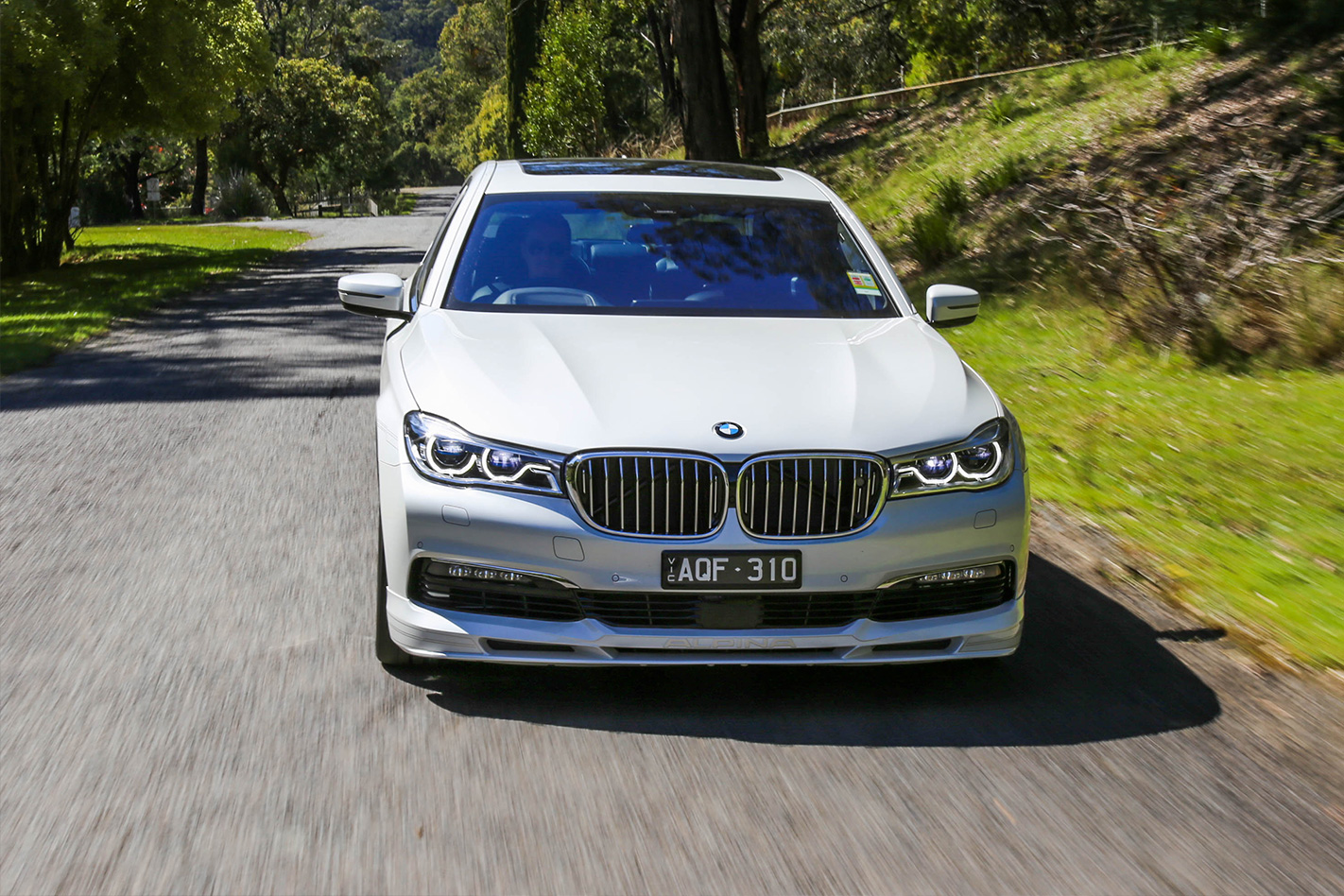
Alpina has fettled BMW’s automatic gearboxes for years, and a longstanding calling card are the push-button manual gear selectors hidden behind the steering wheel’s spokes. Alpina might be holding on to the feature in the name of provenance and heritage, but a move to less fiddly paddles would suit the driving enthusiast better. That said, the M760Li only offers self-serve via the central console-mounted stick.
But it’s the oily bits after the gearbox that represent the second significant mechanical difference. While the Alpina sticks with the rear-drive layout of most of the 7 Series family, the M760Li adopts BMW’s xDrive all-wheel-drive system. In practice, the all-wheel-drive traction makes the M-badged car way faster off the mark despite a 70kg weight penalty.
The Alpina will get to 100km/h from standstill in a claimed 4.2 seconds but with its extra traction, the BMW will cut that to a dizzying 3.7 seconds. In-gear acceleration, however, feels much more closely aligned, with both cars showing an almost unbelievable ability to pile on pace while overtaking. The accompanying silky ride and absence of noise other than the metred engine note makes the whole performance even more surprising.
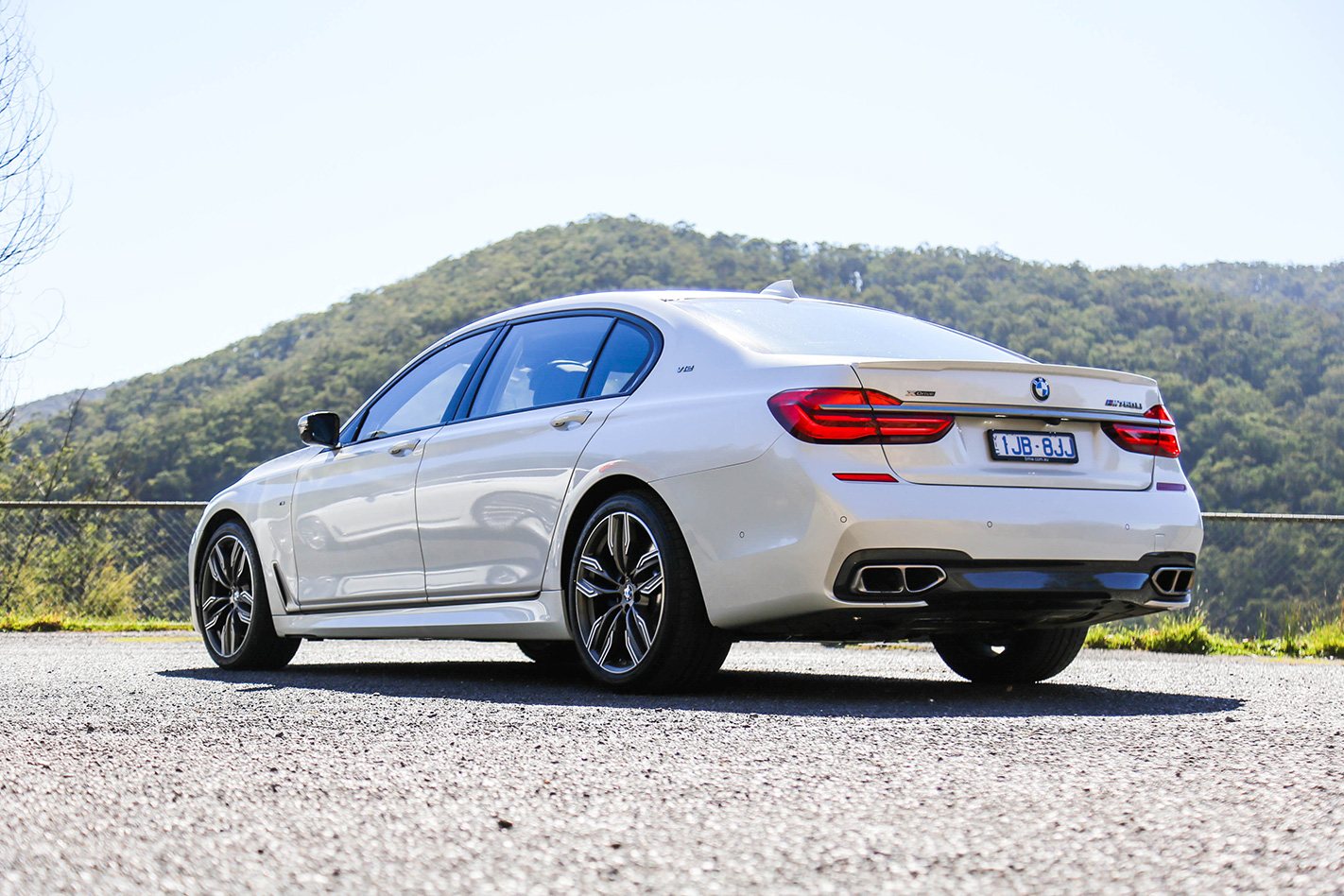
That said, it will carry pace through corners in a way that defies its 2180kg kerb weight. There is certainly a purity to the Alpina’s rear drive chassis which imparts a sharpness when blasting twisty roads, but the xDrive builds in an added confidence. Our money would be on the BMW if you had to get somewhere in a hurry in the wet, but the Alpina’s handling will appeal more to dry-weather driving enthusiasts.
Aside from monstrous performance, the executive set also trades in exclusivity: you are very unlikely to ever see another M760Li or B7 on the road. From a styling perspective, the Alpina shouts its exclusivity with the classic cow-catcher front bumper, massive 20-spoke wheels, iconic pin striping and a bootload of chrome badges, while the M760Li murmurs its differences with classy smoked chrome finishes, subtle V12 badging on its rear quarters, and its more richly tailored body kit. Both turn heads with their sheer presence and size, but we get the impression that while the Alpina drew glances for its exaggerated features, passers-by only wanted to know who was in the back seat of the BMW.
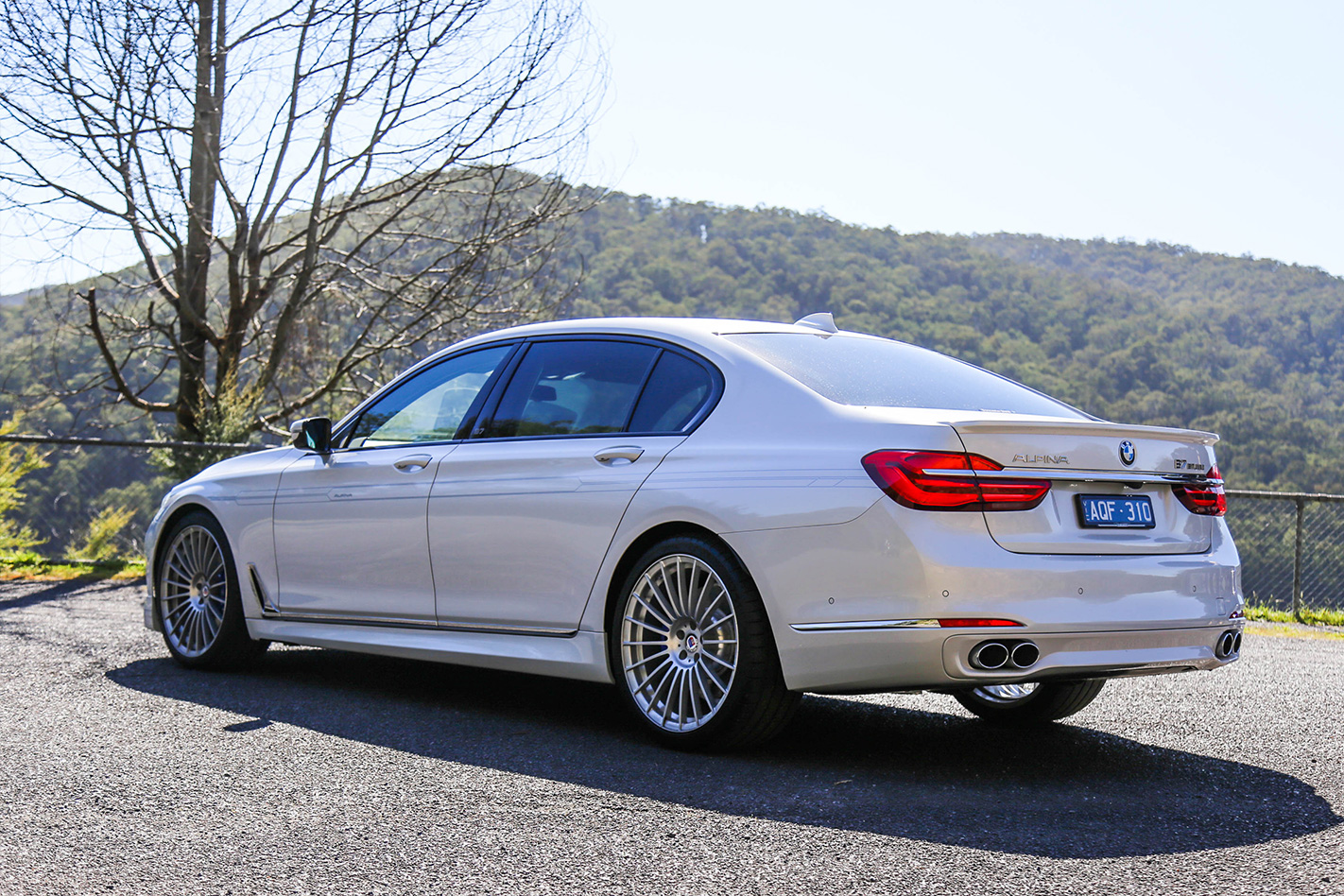
Our cars came decked out with multimedia screens for two rear occupants – a removable tablet that could also control many of the cars’ settings added a third – and rear seats that adjusted electrically, and even came with massage functions.
Both saloons are also dripping with technology, including a heat-sensing camera that can pick out people and animals in the pitch dark, a vast sunroof illuminated with hundreds of stars in the dark, and gesture controls for answering a phone or adjusting the multimedia system’s volume without touching a single switch or dial. The M760Li even has a remote control function on its key fob to allow the driver to slip into a tight parking space without being in the car.
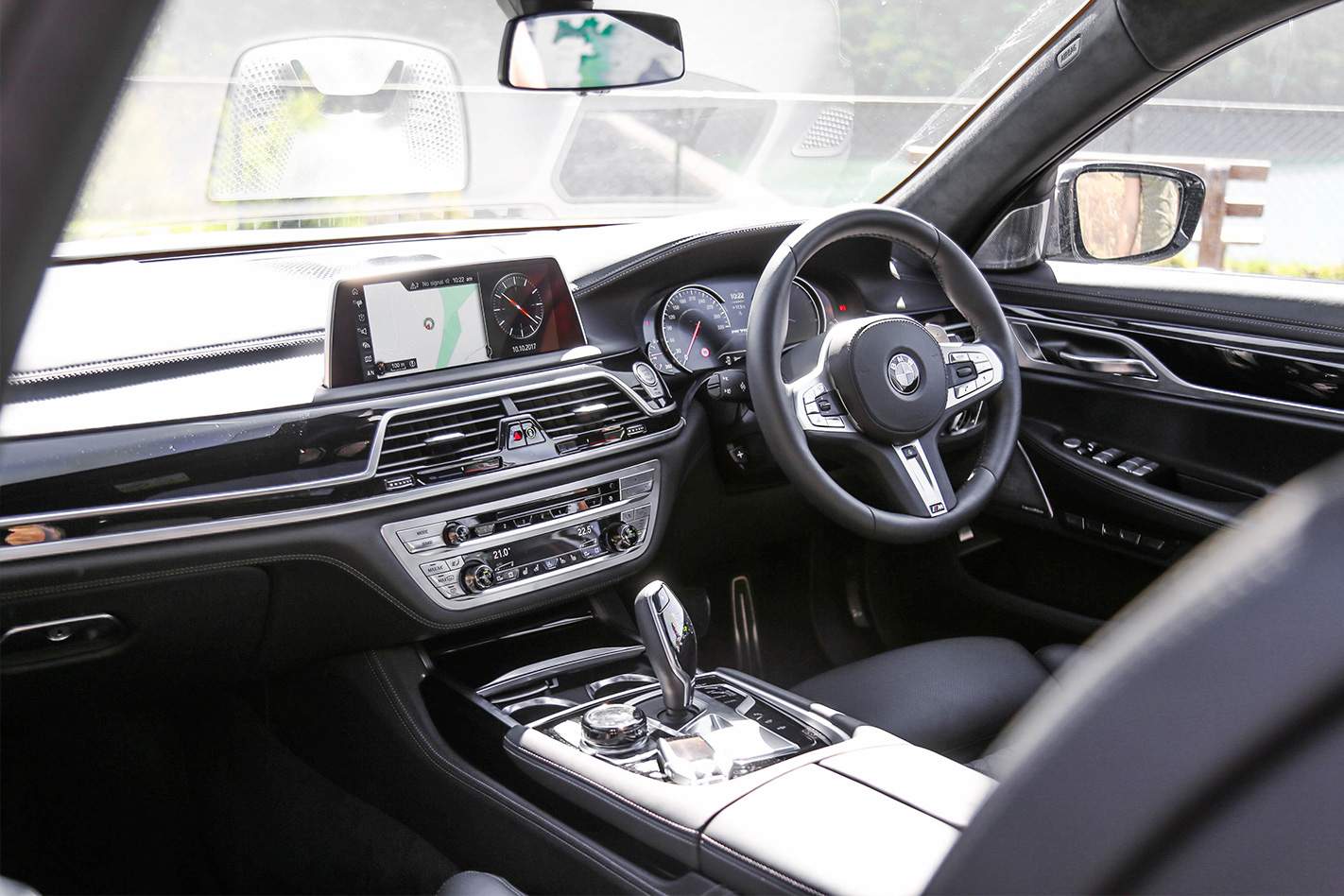
It’s a little disappointing; jump in a 1990s-era Alpina and the interior will have featured a festival of the company’s trademark green and blue, Recaro seats, bespoke steering wheel and unique instrumentation. We would have loved for that spirit to be invoked in the modern equivalent.
Despite the notable boost in performance, the 7 Series’ renowned, underlying ride and comfort remains in both the B7 and the 760Li – perhaps the most impressive attribute of the potent pair. Cart important executives about from one day to the next, and you’d never come to realise the alternate personality that each car hides. Find a stretch of road that you need to cover very quickly, though, and both M760Li and B7 will perform party tricks that need to be experience to be believed.
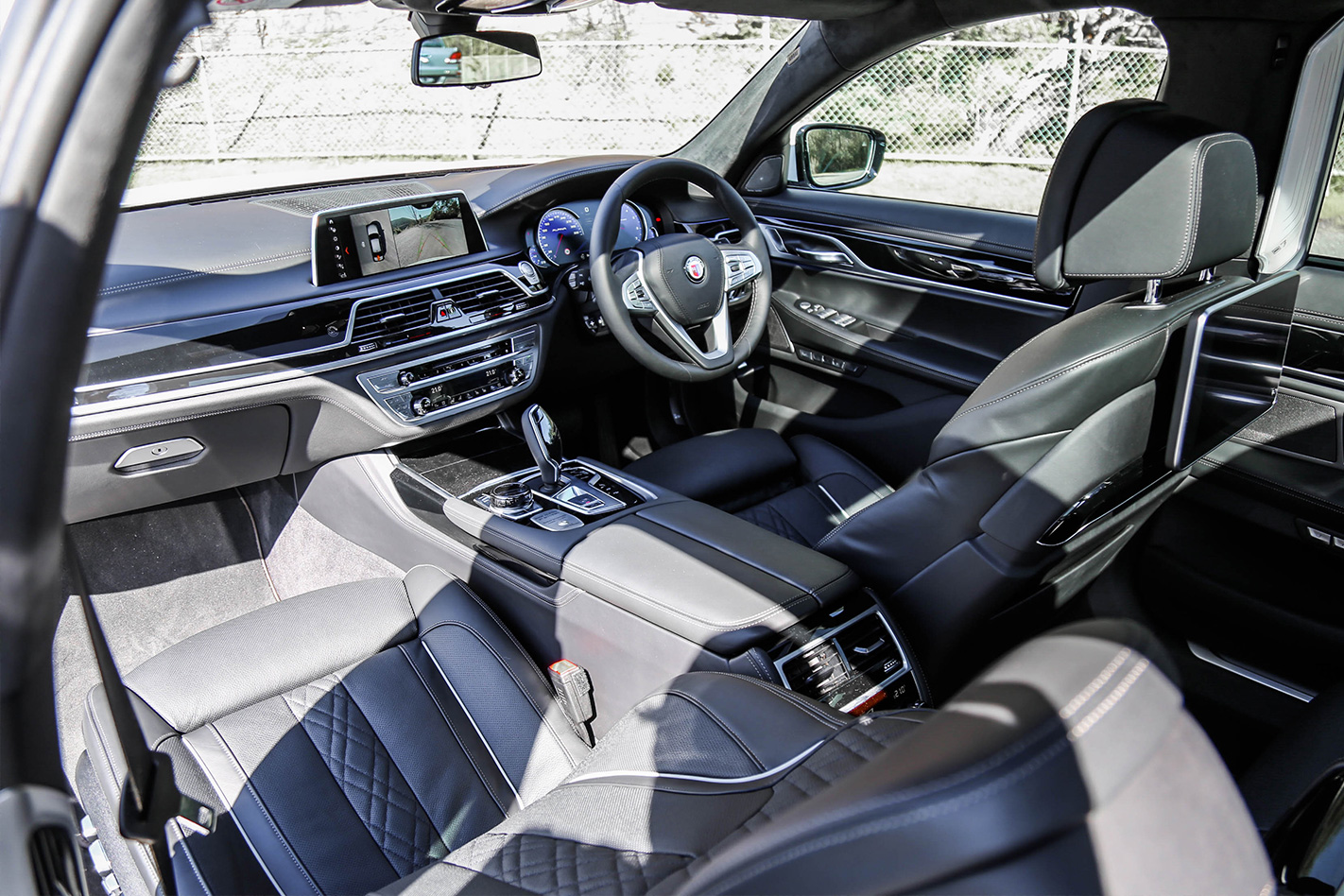
Yearn for an M7, and neither car is for you. But both come close to something worthy of wearing the M badge.
Each, though, delivers a serve of high performance very differently. The rear-drive, high-strung V8-engined Alpina is arguably the option that lends itself best to hard driving, with the less conspicuous styling matching its unapologetic performance.
In the polar opposite way, the M760Li prefers to despatch devastating performance more subtlety, lulling other motorists into thinking it’s a harmless and soporific limo right up to the point where it disappears over the horizon in front of them.

In either case, these hyper sedans embody the luxury brand mantra that to be a purveyor of premium models, you have to be able to offer choice, and lots of it. These two fill that brief. For fans of BMW’s venerable 7 Series, drawn to its comfort but with an underlying need to go places in a hurry, choosing between them will be a delightfully difficult decision.


